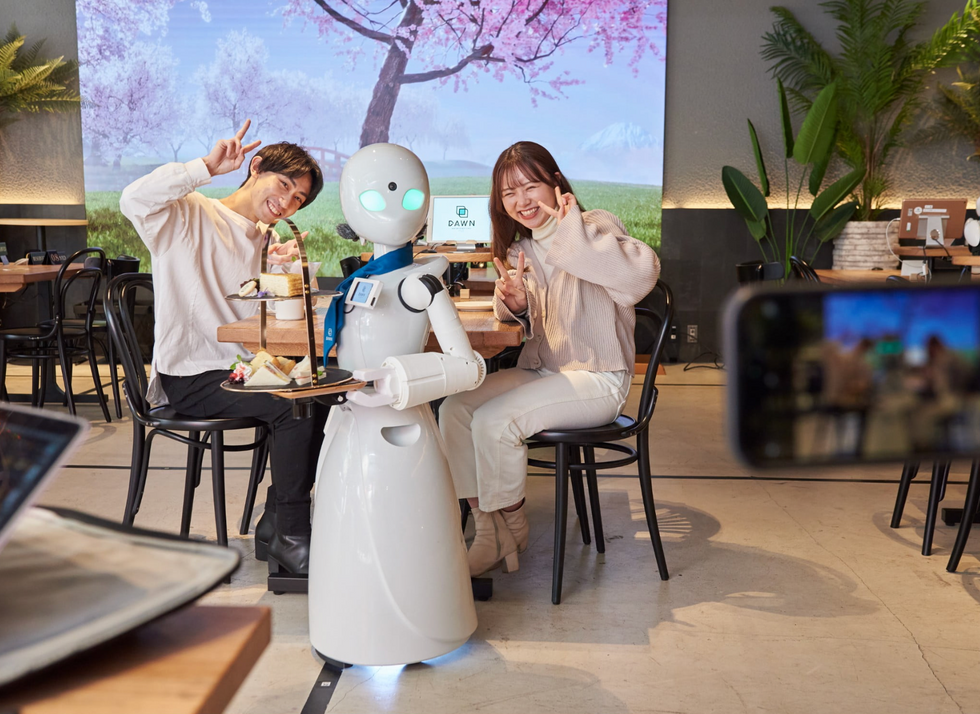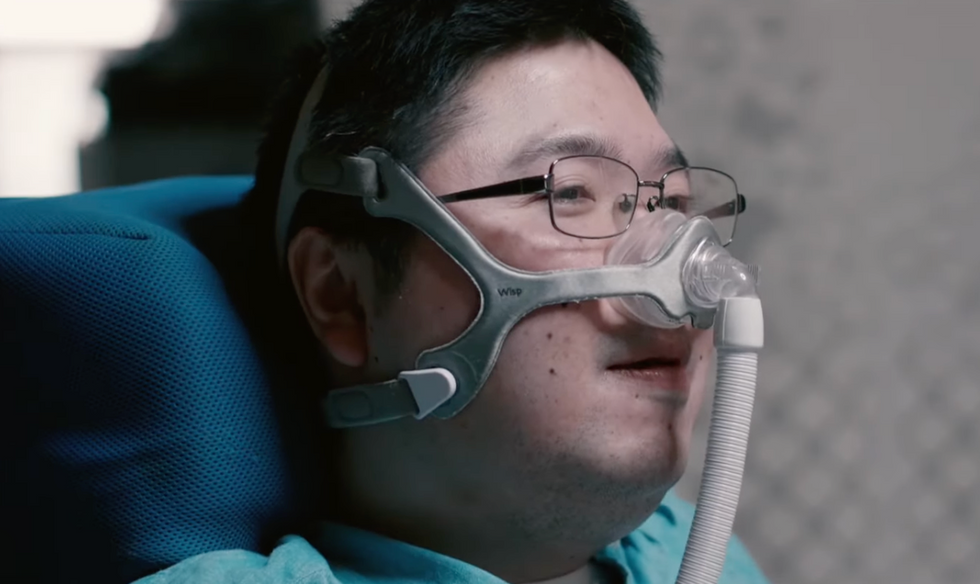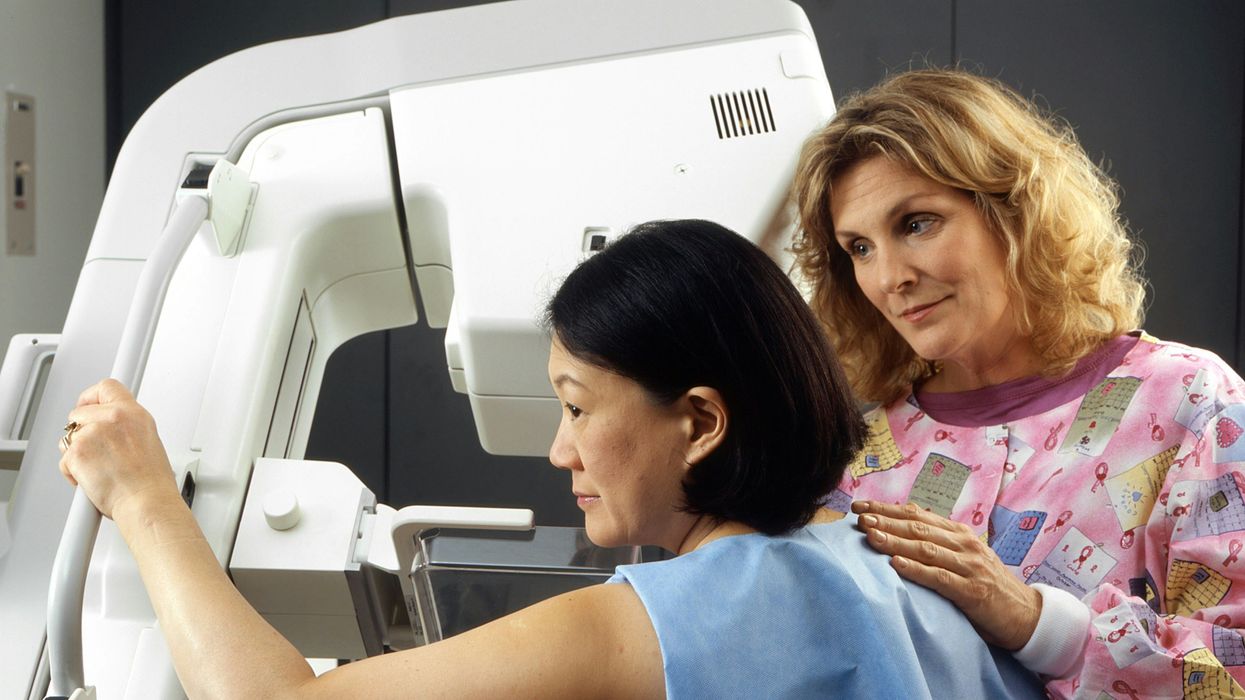After You Die, Your Digital Self Could Live on as a Chatbot

An online memorial concept.
My wife and I visited a will-and-trust lawyer after our first son was born. Everything seemed simple and clear until the lawyer asked, without missing a beat, "So, what about your social media management?" My wife looked at me and, even though I'm more tech savvy, I felt as confused as a Luddite.
One can imagine chatbots becoming the next generation of care management alongside funeral services, and will and testaments.
"Social media management?" I laughed, making a joke about my wife spending more time on Facebook than I do. But the lawyer's question was serious, as were the legal documents asking for our profile page links, passwords, and related information.
What do you want to happen to your Facebook, Twitter, and other social media platforms after you die? Your grandfather may have wanted his cremated ashes poured into the Ganges, or a burial in a prepaid plot. But unlike earlier generations, whose personas ended with their last breath, your bits and bytes could live on across multiple servers, holding a space for you online like a digital obelisk. Or, if you desire, your relatives can do the equivalent of a DNR: Delete account.
"It is the future of 'Get your affairs in order,'" says John Havens, Executive Director of the IEEE Global Initiative on Ethics of Autonomous and Intelligent Systems. He remembers being pulled aside when his father was being put into the ICU and realizing that his dad wasn't going to come back.
Havens says if we are lucky enough to know that we are wrapping up our time, then we have the opportunity not just to bow out of the digital world gracefully, but to have our digital persona carry on beyond us. This persona could go beyond today's static memorial pages on Facebook and Instagram; it could be an interactive computer program designed from your specific speech patterns, memories, and personality – a chatbot.
"I could have an algorithm trained to hear what I say and how I say it," Havens told me. "You can say, 'I'm Damon and I'm going to pass in the next few months, but, you know, over the past six months, I've created a chatbot to continue our conversations. In the upcoming months, my partner or loved ones will let you know when the chatbot will take over and be involved.'"
The chatbot could become an extension of you on platforms like Messenger or WhatsApp, for example. One can imagine this becoming the next generation of care management alongside funeral services, and will and testaments. You can see the future in Eugenia Kuyda, an entrepreneur who successfully created an interactive chatbot of her late friend, Roman Mazurenko, just based on his text messages. Her new program, Replika, may eventually give us the same technology so we, too, can all potentially do the same with our loved ones. Expect other tech companies to follow suit.
There is now no real separation between IRL and online – just as there may be an increasingly blurred line between our personas before and after death.
Chatbots offer us an irresistible decision: They are artificial intelligence programs built to have conversations with people, usually within a service capacity like canceling a shipping order or getting to the right help desk. You can view it as a modern-day helpline and, no doubt, you've interacted with chatbots when you've made purchases online. Chatbots are now becoming verbal, too, managing phone calls you make to your credit card company, local utilities, and other daily operations.
We witnessed our future this spring when Google showed off Google Duplex. It is a voice-driven system that will call people on your behalf with the intention, Google says, to manage your life. At the Google I/O conference, Google CEO Sundar Pichai showed Duplex calling a hair salon and interacting with the human receptionist – with nearly all the pauses, mmm-hmms, and colloquialisms as its female counterpart. "The amazing part is the assistant can actually understand the nuances of conversation," Pichai said to the rapt tech audience.
Recode's Kurt Wagner explained the immediate problem with the Google Duplex demo, which is the same problem technologists so often overlook: What if someone uses your technology in ways you didn't intend? "The major concern with that demo was that Google Assistant never said it was a robot or told the salon that the call was being recorded. When pressed by members of the media in the days after the demo, Google declined to comment, leading some to believe the company had simply overlooked this privacy element altogether."
"This is why disclosure will be so huge," Havens says. "When people call, they will begin with, 'Hello. I am a human.'"
This conflict between the physical and the digital is now coming to a head, though it isn't the clichéd man against machine Skynet conspiracy theories, but rather us against us. Today, it is as if we are split into two or, perhaps more accurately, two personas – our "real-life" persona and our online persona – and we're now experiencing fatigue trying to hold center.
It is a new phenomenon reflective of our social media: Media forerunners like MySpace and Friendster as well as classic websites like LiveJournal and Tumblr allowed us to explore the online world – and, in a sense, the physical world beyond our physical reach – using avatars as close to or as far from our real selves as we desired. On the Internet, nobody knows you're a dog.
Facebook truly eliminated the powerful choice of anonymity, as its extensive verification process required people to give up anonymity to participate in the biggest social network in the world. This was a willful, purposeful decision by Facebook: Founder Mark Zuckerberg has been an advocate of being yourself online, and the former Director of Market Development Randi Zuckerberg infamously said, "I think anonymity on the Internet has to go away… People behave a lot better when they have their real names down."
This was Facebook's intention and, whether or not its theory of people behaving better is true, especially in light of the 2016 U.S. Presidential election, the effects on us are real. Sex workers and other high-risk, anonymity-driven entrepreneurs are being outed via social media. The parallel rise in online addiction clinics isn't a coincidence, as the blur between the physical self and the digital self has never been hazier. There is now no real separation between IRL and online – just as there may be an increasingly blurred line between our personas before and after death.
Chatbots represent a tempting form of convenience: A way to remove our cognitive load to an assistant that will manage our relationships.
We have Carrie Fisher starring in the next Star Wars movie, potentially winning the first truly post-humous Oscar thanks to technology that can help transition older footage into live-recorded footage. Similar, more subtle turns occurred with Paul Walker in the Fast and the Furious 7, which used a combination of CGI and stand-ins. But a key difference is that we actually know they are dead before the movie is even released. As not-famous individuals, we have the ethical choice (duty?) to disclose that information to our social media followers after we die.
While we're still alive, though, chatbots represent a tempting form of convenience: A way to remove our cognitive load to an assistant that will manage our relationships. The rub is that our online relationships are our personal relationships, so we're not just potentially automating, say, our social media feed or our online postings, but our responsibilities in the real-life relationships that we've built. There is no line.
"It's naïve to think that the Google Duplex that was designed to make your hair appointments won't be used to do more difficult things like break up with a girlfriend," Havens says. "Record 50 words, use different inflections, and put in phrases like 'It's not you, it's me.' Why wouldn't people do that?"
Well, it really depends on the person. My wife and I ended up leaving the social media management section of our will blank for now. I even took a long social media sabbatical to connect with people more in person. If my online relationships and my in-person relationships are all becoming the same, then maybe it's OK to let them die – just like I will.
A robot server, controlled remotely by a disabled worker, delivers drinks to patrons at the DAWN cafe in Tokyo.
A sleek, four-foot tall white robot glides across a cafe storefront in Tokyo’s Nihonbashi district, holding a two-tiered serving tray full of tea sandwiches and pastries. The cafe’s patrons smile and say thanks as they take the tray—but it’s not the robot they’re thanking. Instead, the patrons are talking to the person controlling the robot—a restaurant employee who operates the avatar from the comfort of their home.

It’s a typical scene at DAWN, short for Diverse Avatar Working Network—a cafe that launched in Tokyo six years ago as an experimental pop-up and quickly became an overnight success. Today, the cafe is a permanent fixture in Nihonbashi, staffing roughly 60 remote workers who control the robots remotely and communicate to customers via a built-in microphone.
More than just a creative idea, however, DAWN is being hailed as a life-changing opportunity. The workers who control the robots remotely (known as “pilots”) all have disabilities that limit their ability to move around freely and travel outside their homes. Worldwide, an estimated 16 percent of the global population lives with a significant disability—and according to the World Health Organization, these disabilities give rise to other problems, such as exclusion from education, unemployment, and poverty.
These are all problems that Kentaro Yoshifuji, founder and CEO of Ory Laboratory, which supplies the robot servers at DAWN, is looking to correct. Yoshifuji, who was bedridden for several years in high school due to an undisclosed health problem, launched the company to help enable people who are house-bound or bedridden to more fully participate in society, as well as end the loneliness, isolation, and feelings of worthlessness that can sometimes go hand-in-hand with being disabled.
“It’s heartbreaking to think that [people with disabilities] feel they are a burden to society, or that they fear their families suffer by caring for them,” said Yoshifuji in an interview in 2020. “We are dedicating ourselves to providing workable, technology-based solutions. That is our purpose.”

Shota, Kuwahara, a DAWN employee with muscular dystrophy, agrees. "There are many difficulties in my daily life, but I believe my life has a purpose and is not being wasted," he says. "Being useful, able to help other people, even feeling needed by others, is so motivational."
A woman receives a mammogram, which can detect the presence of tumors in a patient's breast.
When a patient is diagnosed with early-stage breast cancer, having surgery to remove the tumor is considered the standard of care. But what happens when a patient can’t have surgery?
Whether it’s due to high blood pressure, advanced age, heart issues, or other reasons, some breast cancer patients don’t qualify for a lumpectomy—one of the most common treatment options for early-stage breast cancer. A lumpectomy surgically removes the tumor while keeping the patient’s breast intact, while a mastectomy removes the entire breast and nearby lymph nodes.
Fortunately, a new technique called cryoablation is now available for breast cancer patients who either aren’t candidates for surgery or don’t feel comfortable undergoing a surgical procedure. With cryoablation, doctors use an ultrasound or CT scan to locate any tumors inside the patient’s breast. They then insert small, needle-like probes into the patient's breast which create an “ice ball” that surrounds the tumor and kills the cancer cells.
Cryoablation has been used for decades to treat cancers of the kidneys and liver—but only in the past few years have doctors been able to use the procedure to treat breast cancer patients. And while clinical trials have shown that cryoablation works for tumors smaller than 1.5 centimeters, a recent clinical trial at Memorial Sloan Kettering Cancer Center in New York has shown that it can work for larger tumors, too.
In this study, doctors performed cryoablation on patients whose tumors were, on average, 2.5 centimeters. The cryoablation procedure lasted for about 30 minutes, and patients were able to go home on the same day following treatment. Doctors then followed up with the patients after 16 months. In the follow-up, doctors found the recurrence rate for tumors after using cryoablation was only 10 percent.
For patients who don’t qualify for surgery, radiation and hormonal therapy is typically used to treat tumors. However, said Yolanda Brice, M.D., an interventional radiologist at Memorial Sloan Kettering Cancer Center, “when treated with only radiation and hormonal therapy, the tumors will eventually return.” Cryotherapy, Brice said, could be a more effective way to treat cancer for patients who can’t have surgery.
“The fact that we only saw a 10 percent recurrence rate in our study is incredibly promising,” she said.

